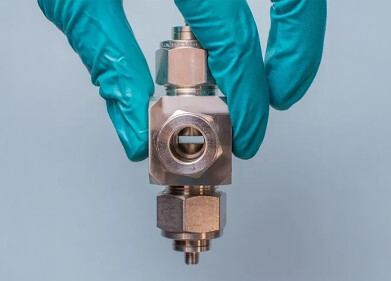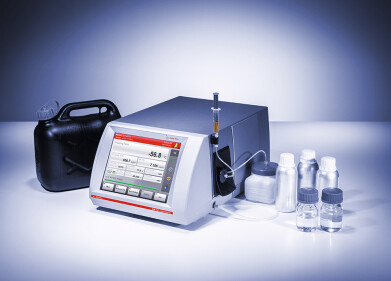Analytical Instrumentation
Crude Oil Contaminants: Chlorine and the Desalting Process
Dec 20 2015
Crude oil contains many contaminants which present challenges to refiners. Some contaminants occur naturally in the crude oil and others are accumulated in the upstream process. The primary means to remove these contaminants is the desalting process.
In the desalting process, water is mixed with the crude, passing through a mix valve prior to entering the Desalter. The mix valve creates vigorous contact between the water and crude resulting in an environment for contaminants to enter the water phase. Once in the Desalter, a current is applied to help accelerate the separation of the oil and water phase. An emulsion breaker may be used to aid in separation. The water with any solids that might have been in the crude is sent to the wastewater treatment plant for treatment.
Whatever contaminants are not removed by the Desalter must be treated chemically. Of particular importance is chlorine that remains in the desalted crude. Chlorine can exist as either Inorganic Chlorine (Calcium Chloride, Sodium Chloride, and Magnesium Chloride) or Organic Chlorine. Typically the Inorganic Chlorine will be removed in the desalter, but Organic Chlorine will stay with the crude oil.
Chlorine can cause corrosion in the Crude Unit by forming hydrochloric acid. Chlorine can react with amine-based treatments to form ammonium chloride, which can deposit in overhead systems. Heat transfer can be impacted and under-deposit corrosion can result. Treating chlorine in crude units is a balancing act. Too much chemical will increase fouling potential and put downstream equipment at risk. Too little chemical presents a risk of corrosion and fouling in the crude unit. Accurate measurement of Chlorine is vital in protecting your assets.
The XOS (USA) Clora On-line analyser accurately measures total Chlorine in raw crude oil, desalted crude, or both. Real time results give the feedback that is critical in keeping systems running properly. Desalter performance can be monitored to make sure it is working optimally. A proper performing desalter will keep the Crude Unit and downstream units operating well and protect the waste water treatment plant from overload. Desalter upsets can easily be detected and impacts of crude slate changes can be identified.
The XOS Clora On-line analyser can also measure total Chlorine in water streams giving flexibility based on your needs. Measuring Chlorine in the overhead waters or desalter wash waters can be easily completed, even if they are sour. These measurements can be used to automate chemical feed, protecting systems around the clock.
The desalting process is critical to the refinery. The XOS Clora On-Line analyser helps ensure quality and avoid issues through the highly accurate measurement of Chlorine in raw crude oil.
Digital Edition
PIN 25.5 Oct/Nov 2024
November 2024
Analytical Instrumentation - Picturing Viscosity – How Can a Viscometer or a Rheometer Benefit You? - Sustainable Grease Formulations: Evaluating Key Performance Parameters and Testing Method...
View all digital editions
Events
Nov 26 2024 Paris, France
Nov 26 2024 Amsterdam, Netherlands
Nov 27 2024 Istanbul, Turkey
Biogas Convention & Trade Fair 2024
Nov 27 2024 Hanover, Germany
Dec 03 2024 Dusseldorf, Germany



















